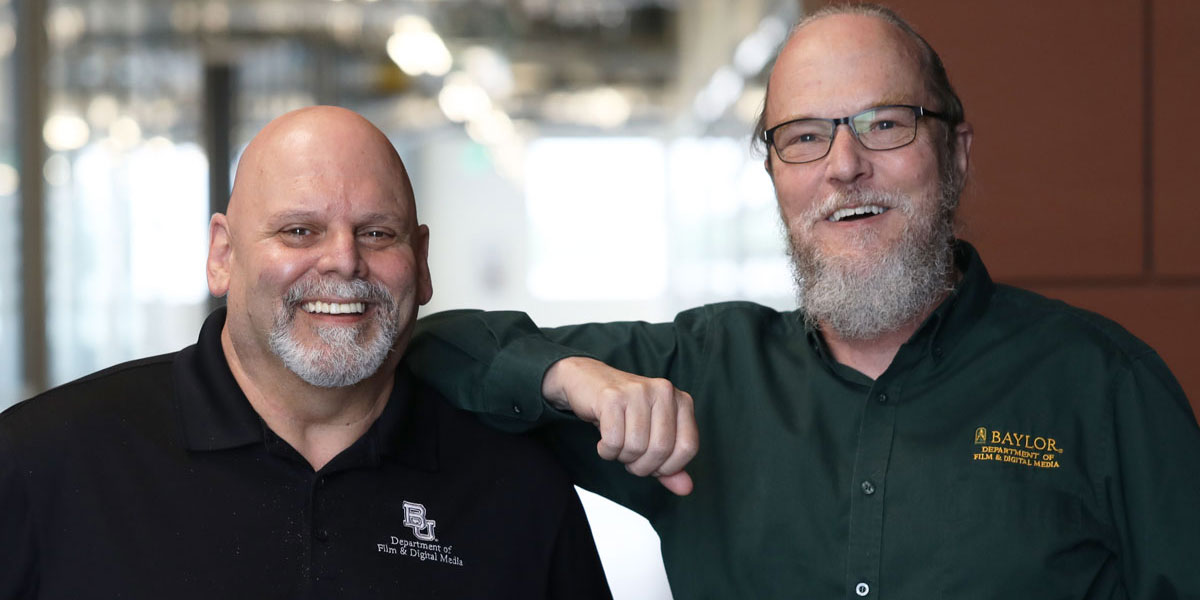The new color imaging system developed at BU that could revolutionize how we see TV/movies

There’s nothing like the view of Earth from space, according to the astronauts who have witnessed it — the aqua blues of the oceans, the subtleties of the browns and reds of the continents. They also say that pictures and videos simply don’t do justice to what they’ve witnessed.
Drs. Corey Carbonara and Michael Korpi, longtime professors of film and digital media at Baylor, are doing their part to change that — and are at the forefront of an innovation that could revolutionize visual storytelling in movies, TV shows, on phone and computer screens, and more.
Last month, they unveiled a new color imaging system called 6P that dramatically enhances the number of colors a screen can display.
Here’s an overview: High-definition cameras record far more color than most screens can display. For instance, if you imagine the view from space, cameras already capture the subtle variations of blue seen in the ocean. However, most screens have a limited palette that can’t display all the recorded variations. The industry has long relied on three color primaries — red, green and blue — that define the various shades of color most screens can show.
“In electronic displays, RGB has been so ingrained,” says Korpi. “For over 30 years, in what I’ll call the recent past, there have been a string of different demos that always fizzled out. The attitude tends to be, ‘Multi-primary has never gone anywhere, and RGB is the way it has to be done. Our approach changes that completely.”
6P is a systemic multi-primary approach (a lot of which, not surprisingly for a revolutionary technology, is proprietary) to enable screens to show more colors — the colors between the colors. 6P’s algorithms and matrices provide the processing to allow HD screens to show the colors that were previously “squished down” by RGB screens.
“As an artist, would you rather have 24 crayons, 64, or 528?” asks Carbonara. “That’s why this evolution is important.”
Carbonara and Korpi have long been at the forefront of new media technologies, like high-definition television in the 1980s and non-linear editing in the 1990s. They’ve maintained relationships with high-level industry professionals, which have benefitted students and professors alike. One of those longtime colleagues, Gary Mandle, came to Carbonara with the idea that became 6P. Mandle, now a senior research scientist at Baylor, said when he decided to come to a university, “Baylor was immediately my first choice.”
6P is being developed through Baylor’s Lab to Market Collaborative towards eventual commercialization and industry usage.
Sic ’em, Drs. Carbonara and Korpi and 6P!
[Want to learn more? Hear directly from Carbonara and Korpi in this recent Baylor Connections podcast and in the YouTube video above, and/or check out this Baylor Magazine feature from the Summer 2021 issue.]

